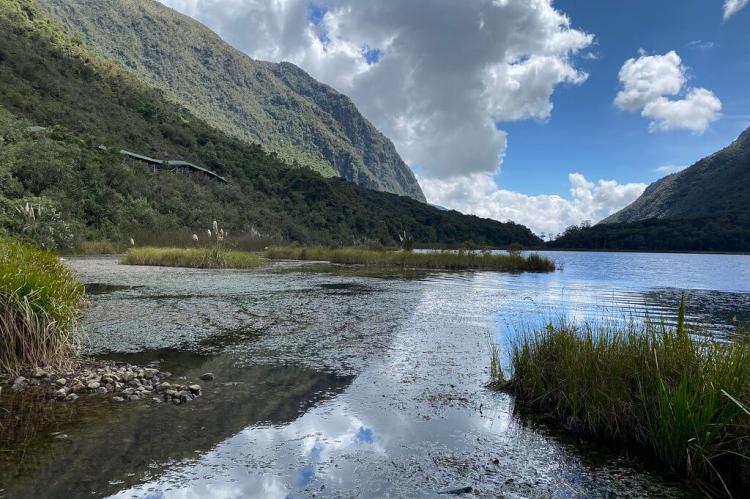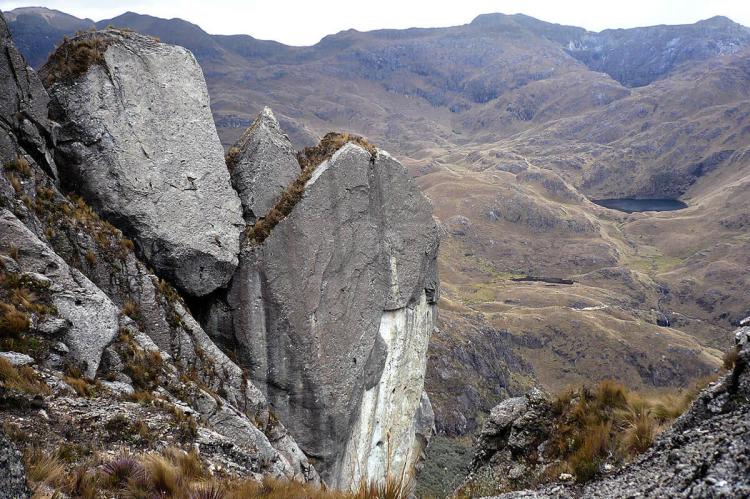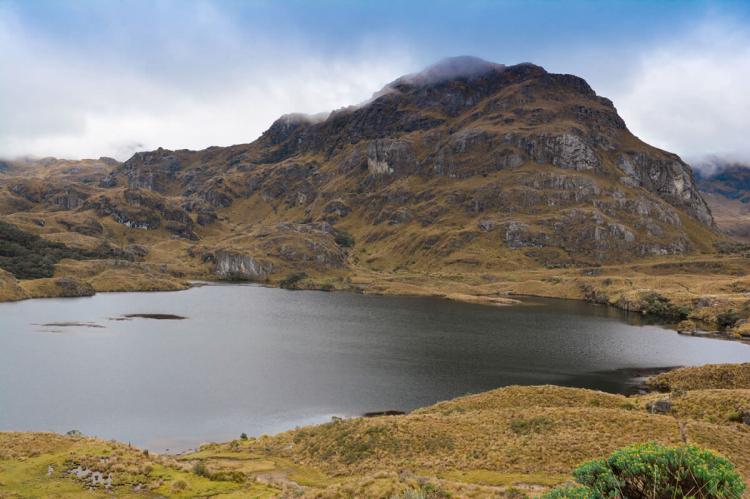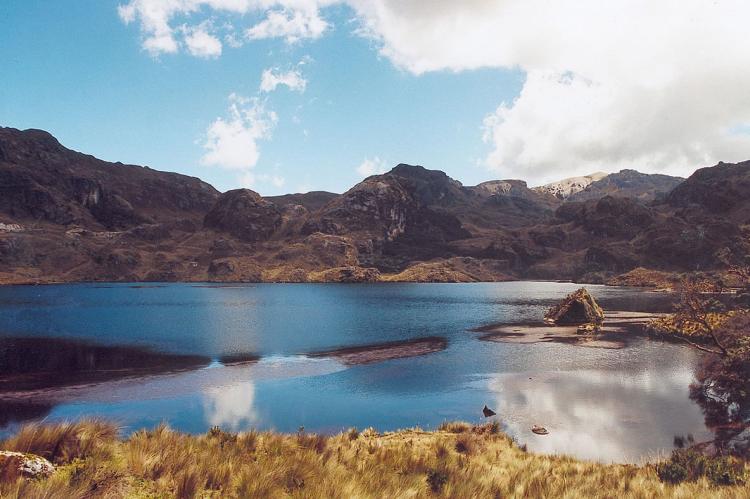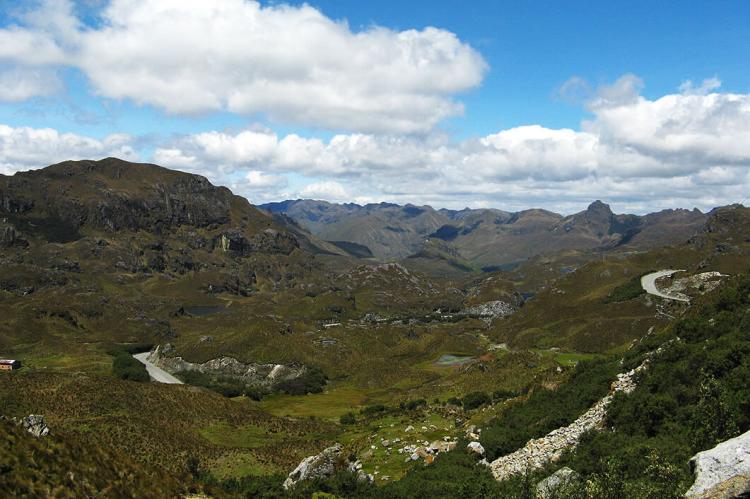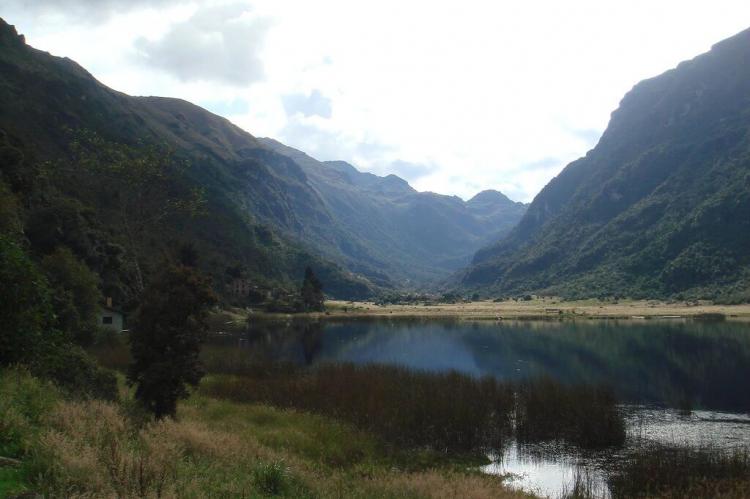El Cajas National Park (Ecuador)
El Cajas National Park is located in southern Ecuador and features tundra vegetation on a spectacular jagged landscape of hills and valleys. This results in a spectacular landscape where the outcrops alternate with a myriad of lakes and lagoons in the páramo of Cajas.
El Cajas National Park
El Cajas National Park is located in southern Ecuador, in the province of Azuay, west of Cuenca. The Park is part of the Macizo del Cajas Biosphere Reserve.
Encompassing an area of 28,544 ha (70,500 acres), El Cajas features tundra vegetation on a jagged landscape of hills and valleys. Large outcrops of bedrock characterize the site.
This is called knob and kettle geomorphology, resulting in a spectacular landscape where the outcrops alternate with a myriad of about 270 lakes and lagoons in the páramo of Cajas.
Two of the four rivers of Cuenca originate from Cajas, the Tomebamba and Yanuncay rivers, which eventually drain into the Amazon River. In addition, the Paute River also links to the Amazon.
As the Park straddles the Continental Divide, its western drainage, the Balao and Cañar, link to the Pacific Ocean.
The Qhapaq Ñan, Andean Road System (Inca road system) crosses the Park and is a relic of the road linking Tomebamba with "Tambo de Paredones" (Molleturo) on the strategic route between the highlands and the coast.
The modern road crosses the Continental Divide at the pass "Tres Cruces" (4,255 m). This section is the most western part of the continental divide of South America.
The highest point in the Park is the 4,450 m (14,600 ft) high Cerro Arquitectos (Architect's Hill), and the elevation of roads reaches higher than 4,310 m (13,550 ft).
Humidity, low temperature, and high altitude with low atmospheric pressure create an ecosystem that accumulates organic material in the soil that can retain water.
Flora and Fauna
The high grassland ecosystem (páramo) contains plants suitably adapted to it, 19 endemics to El Cajas. The dominant plant is straw grass (Calamagrostis intermedia).
Above 3,300 m (10,800 ft), the Quinua (Polylepis) or 'paper tree' forest can be found. In forests such as these, a second protected population of the rare Fuchsia campii, in the Onagraceae family, is predicted to live. It has also been found in another nearby national park of similar ecological characteristics.
In the lower parts of the Park, the cloud forest and perennial high mountain forest are present, primarily in the ravines near the brooks and rivers.
El Cajas National Park is home to a large variety of wildlife, some of which are endemic or highly endangered.
Among the most prominent are:
- the South American condor, of which only 80 remain throughout all of Ecuador
- the curiquinga, a large black and white raptor
- the largest hummingbird in the world, the giant hummingbird (Patagona gigas), lives only on agave flowers
- the violet-throated metaltail (Metalura gorjivioleta), endemic to El Cajas and surrounding valleys.
The avifauna consists of 157 bird species, making birdwatching an engaging activity for visitors.
Overall, 44 mammalian species have been identified in the Park. Species include various types of opossums, cats and bats. In addition, there are pumas, coatis, weasels, skunks, foxes, porcupines, pacas, shrews, rabbits, and other rodents.
Endemic species include the Cajas water mouse (Chibchanomys orcesi) that belongs to the group Ichthyomyini and Tate's shrew opossum (Caenolestes tatei).
At least 17 species of amphibians live around the lagoons of El Cajas. This includes the genera Atelopus, Telmatobius, Gastrotheca, Eleutherodactylus, and Colostethus. The wide variety of amphibians suggests the presence of a diversity of insects, as they are a chief amphibian food source.
